Jump to a presenter:
Brother Guy Consolmagno
David H. Bailey
Jeffrey M. Bradshaw
Samuel M. Brown
James E. Faulconer
Brant A. Gardner
Ugo A. Perego
Daniel C. Peterson
Jani Radebaugh
Stephen H. Webb
Camille Stilson Williams
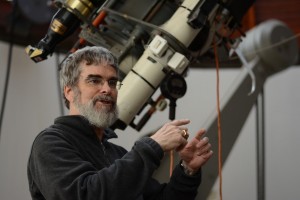 Brother Guy Consolmagno SJ is both Director of the Vatican Observatory and President of the Vatican Observatory Foundation. The senior planetary scientist at the Observatory, with an extensive research record, he also serves as Director of Public Relations for the Vatican Observatory, giving numerous public talks and interviews on astronomy and the relationship between science and religion.
Brother Guy Consolmagno SJ is both Director of the Vatican Observatory and President of the Vatican Observatory Foundation. The senior planetary scientist at the Observatory, with an extensive research record, he also serves as Director of Public Relations for the Vatican Observatory, giving numerous public talks and interviews on astronomy and the relationship between science and religion.
Brother Guy was born in Detroit, Michigan and graduated from the University of Detroit (Jesuit) High School, class of 1970. He earned undergraduate (1974) and masters’ (1975) degrees from MIT, and a Ph. D. (1978) in Planetary Science from the University of Arizona, was a researcher at Harvard and MIT, served in the US Peace Corps (Kenya), and taught university physics at Lafayette College, Pennsylvania, before entering the Jesuits in 1989.
At the Vatican Observatory since 1993, his research explores connections between meteorites, asteroids, and the evolution of small solar system bodies. With collaborators at the Vatican’s 1.8 meter Advanced Technology Telescope in Arizona, he surveys the broad band colors and light curves of Kuiper Belt objects, using these data to develop an understanding of their compositions and internal structures as a function of their orbital parameters. At Castel Gandolfo, he curates the Vatican’s meteorite collection and measures meteorite physical properties, including density, porosity, magnetic susceptibility, thermal conductivity, and heat capacity. His work has resulted in more than 200 scientific publications.
He is the author of a number of popular books including Turn Left at Orion (with Dan Davis), Worlds Apart (with Martha Schaefer), Brother Astronomer, and God’s Mechanics. For the International Year of Astronomy he edited The Heavens Proclaim: Astronomy and the Vatican. His most recent book, with Fr. Paul Mueller SJ, is Would You Baptize an Extraterrestrial? It is due from Image Books in the fall of 2014. He also has hosted science programs for BBC Radio 4, been interviewed in numerous documentary films, and appeared on The Colbert Report. For ten years he has written a monthly science column for the British Catholic magazine, The Tablet.
Dr. Consolmagno has been elected to the governing boards of a number of international scientific organizations, including the International Astronomical Union (IAU), the Meteoritical Society, and the Division for Planetary Sciences of the American Astronomical Society (AAS/DPS). Presently he serves on the IAU Working Groups on Planetary System Nomenclature and on Cartographic Coordinates and Rotational Elements. He served as chairperson of the AAS/DPS in 2006-2007, was president of IAU Commission 16 (Planets and Satellites) (2003-2006) and secretary of IAU Division III, Planetary Systems Sciences 2000-2009), and sat on the Council of the Meteoritical Society (2003-2006), hosting the annual Meteoritical Society meeting in Rome in 2001. He has held chairs as a visiting Jesuit scholar at St. Joseph’s University, Fordham University, and LeMoyne College.
In the fall of 2014 Br. Consolmagno received the Carl Sagan Medal from the American Astronomical Society. The citation explains that the medal is awarded for “outstanding communication by an active planetary scientist to the general public. Br. Guy Consolmagno has a decades-long track record of communicating planetary science to the public while maintaining an active science career. In addition, he occupies a unique position within our profession as a credible spokesperson for scientific honesty within the context of religious belief.
As a Jesuit Brother, Guy has become the voice of the juxtaposition of planetary science and astronomy with Christian belief, a rational spokesperson who can convey exceptionally well how religion and science can co-exist for believers.”
 David H. Bailey is a mathematician and computer scientist. He recently retired from the Lawrence Berkeley National Laboratory, but is still a very active research scientist. He has published six books and over two hundred technical papers on topics such as high-performance scientific computing, computational mathematics, financial mathematics, and computational biology. He has received the Sidney Fernbach Award from the IEEE Computer Society, the Gordon Bell Prize from the Association for Computing Machinery, and the Chauvenet and Merten Hesse Prizes from the Mathematical Association of America — the only person to have received major awards from each of these three professional societies.
David H. Bailey is a mathematician and computer scientist. He recently retired from the Lawrence Berkeley National Laboratory, but is still a very active research scientist. He has published six books and over two hundred technical papers on topics such as high-performance scientific computing, computational mathematics, financial mathematics, and computational biology. He has received the Sidney Fernbach Award from the IEEE Computer Society, the Gordon Bell Prize from the Association for Computing Machinery, and the Chauvenet and Merten Hesse Prizes from the Mathematical Association of America — the only person to have received major awards from each of these three professional societies.
Bailey is a strong believer in rigorous standards of ethics and reproducibility in scientific research. In 1991, concerned about lax standards in the field of high-performance computing at the time, Bailey wrote papers highlighting questionable practices and proposing more rigorous standards to analyze performance. In November 2015, one of these papers was recognized with the Test of Time Award from the ACM/IEEE Supercomputing Conference for its enduring impact on the field. More recently, he has also written about the lack of rigorous standards in the financial mathematics field, and has proposed new techniques and methodologies to ensure responsible research in the field.
Bailey has also written extensively on topics of science and religion in general, and on science and Mormonism in particular. He is the editor of the website ScienceMeetsReligion.org, which includes articles on topics such as evolution, geology, physics, cosmology, and how the awe-inspiring developments in these fields can be seen to be in harmony with modern, enlightened religion.
Bailey and his wife, Linda, live in Alamo, California. He served as a full-time missionary in the Hong Kong-Taiwan Mission, and currently teaches the High Priests Quorum. Linda volunteers at the Oakland Family History Center. They have four married daughters and seven grandchildren.
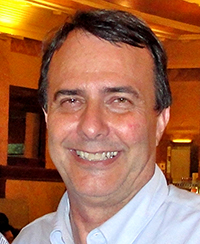 Jeffrey M. Bradshaw (PhD, Cognitive Science, University of Washington) is a Senior Research Scientist at the Florida Institute for Human and Machine Cognition (IHMC) in Pensacola, Florida (www.ihmc.us/groups/jbradshaw; en.wikipedia.org/wiki/Jeffrey_M._Bradshaw). His professional writings have explored a wide range of topics in human and machine intelligence (www.jeffreymbradshaw.net). From 1985 to 2000, Bradshaw led research groups at The Boeing Company. Jeff is an Honorary Visiting Researcher at the University of Edinburgh, a former Visiting Professor at the Institut de Cognitique at the University of Bordeaux, and a member of the Graduate Faculty, Human-Centered Design Institute of the Florida Institute of Technology.
Jeffrey M. Bradshaw (PhD, Cognitive Science, University of Washington) is a Senior Research Scientist at the Florida Institute for Human and Machine Cognition (IHMC) in Pensacola, Florida (www.ihmc.us/groups/jbradshaw; en.wikipedia.org/wiki/Jeffrey_M._Bradshaw). His professional writings have explored a wide range of topics in human and machine intelligence (www.jeffreymbradshaw.net). From 1985 to 2000, Bradshaw led research groups at The Boeing Company. Jeff is an Honorary Visiting Researcher at the University of Edinburgh, a former Visiting Professor at the Institut de Cognitique at the University of Bordeaux, and a member of the Graduate Faculty, Human-Centered Design Institute of the Florida Institute of Technology.
Jeff helped pioneer the research area of multi-agent systems, and his first book on the topic, Software Agents, became a classic in the field and a best-seller for The MIT Press. In addition, Jeff’s group at IHMC conducts research topics such as digital policy, identity management, semantic technologies, cyber sensemaking, self-driving cars, and visualizations that exploit principles of human perception and cognition. Results have been applied to scores of commercial and government applications. Jeff has organized a series of Human-Agent-Robot Teamwork (HART) workshops. He chairs the Scientific Advisory Council for the Nissan Research Center—Silicon Valley and co-edits the Human-Centered Computing Department for IEEE Intelligent Systems.
Jeff has been the recipient of several awards and patents and has been an adviser for weighty initiatives in science, defense, space, industry, and academia worldwide. He was a member of the Defense Science Board 2015 Study on Autonomy, the Board on Global Science and Technology for the National Academies of Science, and the National Research Council Committee on Emerging Cognitive Neuroscience Research. He is former chair of ACM SIGART (now SIGAI) and the RIACS Science Council for NASA Ames. He was a scientific advisor to the Cognitive Science Program at Sandia National Laboratories, the HCI and Visualization program at the German Research Center for Artificial Intelligence (DFKI), and to the Japanese NEC Technology Paradigm Shifts initiative. He received the Web Intelligence Consortium Outstanding Contributions Award.
Jeff has an abiding interest in Genesis, temples, and the ancient Near East (www.templethemes.net). He has lectured at BYU Campus Education Week, the Sidney B. Sperry Symposium, and at FairMormon meetings. He has published highly acclaimed commentaries on the Book of Moses and Genesis (In God’s Image and Likeness series), and other volumes on temple-related topics (Temple Themes series). His articles have appeared in Studies in the Bible and Antiquity, Element: A Journal of Mormon Philosophy and Theology, Interpreter: A Journal of Mormon Scripture, Meridian Magazine, and BYU Studies. He is a vice president for The Interpreter Foundation and is on the Advisory Board for the Academy for Temple Studies.
Jeff was a missionary in France and Belgium from 1975-1977, and his family has returned twice to live in France: once from 1993-1994 as a Fulbright Scholar and a second time from 2005-2006 as an unexpected “sabbatical” in the aftermath of Hurricane Ivan. Jeff has served twice as a bishop and twice as a counselor in the stake presidency of the Pensacola Florida Stake. He and his wife, Kathleen, are the parents of four children and nine grandchildren. In July 2016, they will begin two years of service in the Democratic Republic of Congo, Kinshasa Mission.
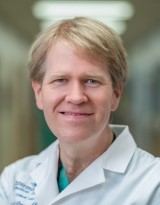 Samuel M. Brown (http://samuelbrown.net ; @DrSamuelBrown) graduated summa cum laude from Harvard College in Linguistics with a minor in Russian, then received his MD from Harvard Medical School, where he was a National Scholar and Massachusetts Medical Society Scholar. After graduation he completed residency at Massachusetts General Hospital, where he remained on faculty as an Instructor in General Medicine at Harvard Medical School before moving to the University of Utah, where he completed fellowship training. He is Assistant Professor of Pulmonary and Critical Care Medicine and Medical Ethics and Humanities at the University of Utah, based clinically at the Shock Trauma ICU at Intermountain Medical Center in Salt Lake City.
Samuel M. Brown (http://samuelbrown.net ; @DrSamuelBrown) graduated summa cum laude from Harvard College in Linguistics with a minor in Russian, then received his MD from Harvard Medical School, where he was a National Scholar and Massachusetts Medical Society Scholar. After graduation he completed residency at Massachusetts General Hospital, where he remained on faculty as an Instructor in General Medicine at Harvard Medical School before moving to the University of Utah, where he completed fellowship training. He is Assistant Professor of Pulmonary and Critical Care Medicine and Medical Ethics and Humanities at the University of Utah, based clinically at the Shock Trauma ICU at Intermountain Medical Center in Salt Lake City.
Dr. Brown uses advanced statistical methods to study two main sets of problems: heart dysfunction during life-threatening infection and the human side of intensive care. His physiological research incorporates ultrasound images of the heart and complex analysis of heart rate and blood pressure to understand better how to prevent death from sepsis. Dr. Brown also merges quantitative and qualitative/humanistic approaches to making medicine human through the Center for Humanizing Critical Care (http://bit.ly/HumanICU), which he founded and directs at Intermountain Medical Center. The Center works to improve the outcomes that matter most to patients and families and to develop systems of care that best protect the human dignity of patients and families as they face life-threatening illness. On occasional free weekends, he studies intellectual history, with a particular emphasis on questions of embodiment, sickness, and death. He has published widely in medicine, ethics, and history.
Dr. Brown has written an award-winning history of death in early Mormonism, In Heaven as It Is on Earth (Oxford, 2012) and a related devotional volume in the Living Faith series for Latter-day Saints, First Principles and Ordinances (Maxwell Institute, 2014). He is editor of a medical textbook, Comprehensive Critical Care Ultrasound (Society of Critical Care Medicine, 2015). His Through the Valley of Shadows: Living Wills, Intensive Care, and Making Medicine Human (Oxford, 2016) outlines a fundamentally new vision for medical care and support when life is threatened. His current Mormon project is preliminarily titled The Metaphysics of Translation in Early Mormonism.
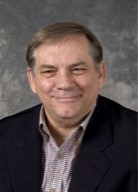 James E. Faulconer is an American philosopher, a Richard L. Evans Professor of Philosophy at Brigham Young University, The director of BYU’s London Centre, a fellow and the associate director of the Wheatley Institution, and the former dean of Undergraduate Education and chair of the Philosophy Department at BYU. In addition, he has been a visiting professor at the Institute of Philosophy of the Catholic University of Leuven (“Louvain”) in Belgium, and spent a year on research leave at the Bibliothèque d’École Normale Supérieure, in Paris.
James E. Faulconer is an American philosopher, a Richard L. Evans Professor of Philosophy at Brigham Young University, The director of BYU’s London Centre, a fellow and the associate director of the Wheatley Institution, and the former dean of Undergraduate Education and chair of the Philosophy Department at BYU. In addition, he has been a visiting professor at the Institute of Philosophy of the Catholic University of Leuven (“Louvain”) in Belgium, and spent a year on research leave at the Bibliothèque d’École Normale Supérieure, in Paris.
Faulconer received his B.A. in English from BYU. He then received Master’s and Ph.D. degrees in philosophy from Pennsylvania State University. His area of interest in philosophy is contemporary European philosophy, particularly the work of Martin Heidegger and late 20th- and early 21st-century French thinkers. He was the founding editor of Epoché: A Journal for the History of Philosophy.
Faulconer is a prolific author and speaker. His published works include:
- Introduction to Logic, with Dennis J. Packard. D. Van Nostrand, 1980. 417 pages.
- Tools for Scripture Study. Provo, Utah: FARMS, 1999. 156 pages.
- Romans 1: Notes and Reflections. Provo, Utah: FARMS, 1999. 142 pages.
- Faith, Philosophy, Scripture. Provo, Utah: Maxwell Institute, 2010. 254 pages.
- The Life of Holiness: Notes and Reflections on Romans 1, 5-8. Provo, UT: Maxwell Institute, 2012. 497 pages.
- The Doctrine and Covenants Made Harder: Study Questions. Salem, OR: Salt Press, 2013, 285 pages.
- The Old Testament Made (Even) Harder: Study Questions. Provo, UT: Maxwell Institute. In press.
- The Book of Mormon Made Harder: Study Questions. Provo, UT: Maxwell Institute. In press.
- The New Testament Made Harder: Study Questions. Provo, UT: Maxwell Institute. In press.
- Reconsidering Psychology: Perspectives from Contemporary Continental Philosophy. with R. N. Williams. Pittsburgh: Duquesne University Press. 1990. 262 pages.
- Appropriating Heidegger. with Mark W. Wrathall. Cambridge: Cambridge University Press, 2000. 214 pages
- Transcendence in Religion and Philosophy. Indianapolis: Indiana University Press, 2003. 151 pages.
- Common Ground — Different Opinions: Latter-day Saints and Contemporary Issues. with Justin White. Salt Lake City, UT: Kofford, 2013.
 Brant A. Gardner (M.A. State University of New York Albany) is an American writer and speaker on the Book of Mormon and Mesoamerican studies.
Brant A. Gardner (M.A. State University of New York Albany) is an American writer and speaker on the Book of Mormon and Mesoamerican studies.
Gardner received a B.A. in University Studies from Brigham Young University in 1975, and an M.A. in Anthropology from the State University of New York, Albany (SUNY) in 1978. From 1978–80, Gardner continued at SUNY, completing all the course work, but not exams or a dissertation, toward a Ph.D. in Mesoamerican ethnohistory.
Professionally, Gardner has worked in software consulting and product management. In Mesoamerican studies, Gardner has published on classical Nahuatl kinship terminology, ethnohistoric investigation of Coxoh in southern Mexico, and the Aztec Legend of the Suns. He has published with the New World Archaeological Foundation and the Institute for Mesoamerican Studies. He has contributed articles to Estudios de Cultura Nahuatl and Symbol and Meaning Beyond the Closed Community.
Gardner has published widely on the Book of Mormon and its possible geographical settings. He has often written for the FARMS Review of Books and has presented in the conferences of the Foundation for Apologetic Information & Research (FAIR) during 2000–4, and 2008. In 2007 he presented on “DNA and the Book of Mormon” to the Book of Mormon Archaeological Forum.
Gardner is the author of Second Witness: Analytical & Contextual Commentary on the Book of Mormon, published by Greg Kofford Books in 2007. This six-volume commentary on the Book of Mormon focuses on its spiritual, theological, cultural, textual, and historical context. He has also written The Gift and Power: Translating the Book of Mormon (2011) and Traditions of the Fathers: The Book of Mormon as History (2015), both published through Greg Kofford Books.
Gardner lives in Albuquerque, New Mexico. From 1971 to 1973, he served as a missionary for the church in the Spain Madrid Mission.
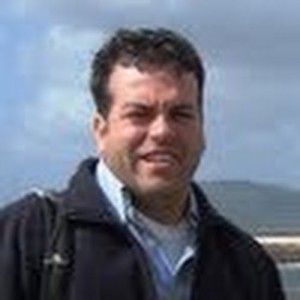 Ugo A. Perego is a population geneticist. He has published and presented extensively on DNA and its application in populations, forensic, ancestry, historical, and genealogical studies.
Ugo A. Perego is a population geneticist. He has published and presented extensively on DNA and its application in populations, forensic, ancestry, historical, and genealogical studies.
Dr. Perego was a senior researcher for the Sorenson Molecular Genealogy Foundation and a Scientific Consultant for GeneTree.com for twelve years, where he contributed to the building of one of the world’s largest repositories of combined genealogical and genetic data.
Dr. Perego has a PhD in Genetics and Biomolecular Studies from the University of Pavia in Italy, where he studied under the mentorship of Professor Antonio Torroni, who was part of the team of scientists to first identify genetic diversity among Native American populations in the early 1990s. He received a BSc and MSc in Health Sciences from Brigham Young University.
Dr. Perego has lectured extensively internationally, authoring and co-authoring numerous articles on the use of DNA to research ancient population migrations, genealogies, and history, including Mormon history. Dr. Perego is the owner of The Genetic Genealogy Consultant.
Dr. Perego currently resides in Italy, where he is the director of the Rome Institute Campus and a visiting scientist at the University of Perugia. A complete list of publications can be found at http://www.josephsmithdna.com.
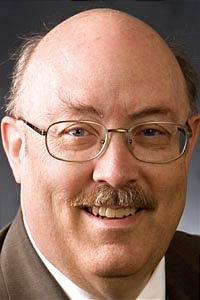 A native of southern California, Daniel C. Peterson is currently a professor of Islamic studies and Arabic at Brigham Young University (BYU), where, among other things, he has taught courses on Arabic language and literature, Islamic cultural and intellectual history, medieval Islamic and Jewish philosophical texts, the history of the Islamic world before 1800, the religion of Islam, and the Qur’an. He has lectured throughout the Islamic world and on every inhabited continent.
A native of southern California, Daniel C. Peterson is currently a professor of Islamic studies and Arabic at Brigham Young University (BYU), where, among other things, he has taught courses on Arabic language and literature, Islamic cultural and intellectual history, medieval Islamic and Jewish philosophical texts, the history of the Islamic world before 1800, the religion of Islam, and the Qur’an. He has lectured throughout the Islamic world and on every inhabited continent.
He founded the organization that later became BYU’s Middle Eastern Text Initiative (METI). METI publishes dual-language editions of classical texts of medieval Islamic philosophy and science. He led METI until mid-2012.
Peterson has authored, co-authored, or edited several books and many articles on both Islamic and Mormon topics. Among these are Abraham Divided: An LDS Perspective on the Middle East (1992) and Muhammad: Prophet of God (2007). He writes weekly for the Deseret News.
From 1988 through mid-2012, Peterson was deeply involved in the Foundation for Ancient Research and Mormon Studies (FARMS) and its successor organization, the Neal A. Maxwell Institute for Religious Scholarship, eventually chairing the FARMS board of trustees and serving as associate executive director. In 2012, he became the chairman and president of the newly established Interpreter Foundation, which among many other activites, publishes Interpreter: A Journal of Mormon Scripture. He has served as President of the Society for Mormon Philosophy and Theology.
Peterson earned a bachelor’s degree in Greek and philosophy from Brigham Young University (BYU). Then, after several years of study in Jerusalem and Cairo, he received a doctorate in Arabic and Persian from the University of California at Los Angeles. His dissertation — which united his interests in Plotinian Neoplatonism, ancient and medieval cosmogonic speculations, and Islamic philosophical theology — won a prize from the Middle East Studies Association of North America.
He interrupted his undergraduate studies to represent The Church of Jesus Christ of Latter-day Saints as a missionary in German-speaking Switzerland. The valleys of Lauterbrunnen and Grindelwald — which inspired the elfin valley of Rivendell in J. R. R. Tolkien’s works — remain his favorite earthly landscape today.
In 1978, Peterson married Deborah Stephens in the Salt Lake Temple. They are the parents of three sons and the grandparents of one granddaughter.
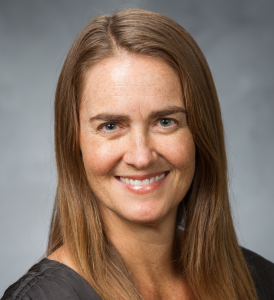 Jani Radebaugh is a planetary scientist who specializes in the shapes and origins of landscapes on Earth and other planets in the solar system. She is an Associate Professor of Geological Sciences at Brigham Young University, where she interacts with many students through research and teaching a variety of courses. She obtained her PhD in planetary science from the world-renowned University of Arizona’s Lunar and Planetary Laboratory and has been at BYU since 2006.
Jani Radebaugh is a planetary scientist who specializes in the shapes and origins of landscapes on Earth and other planets in the solar system. She is an Associate Professor of Geological Sciences at Brigham Young University, where she interacts with many students through research and teaching a variety of courses. She obtained her PhD in planetary science from the world-renowned University of Arizona’s Lunar and Planetary Laboratory and has been at BYU since 2006.
Jani analyses images of other planets obtained by spacecraft to determine the geologic histories of the surfaces and interiors. She studies landforms on Earth, where it is possible to walk around on them and obtain samples, to gain insight into similar landforms and processes on other planets. Her current investigations include giant sand dunes, mountains, volcanoes, rivers and lakes on Saturn’s moon Titan from the currently operating Cassini spacecraft, and she studies actively erupting volcanoes and mountains on Jupiter’s moon Io from the Galileo, Cassini, and Voyager spacecraft. She has done field work in the Egyptian Sahara, the Arabian peninsula, the Ethiopian Afar Rift Valley, Australia, the Argentine Altiplano, Hawaii, and the desert southwestern U.S. She is a regular participant in the U.S. Antarctic Search for Meteorites Program, where she spends six weeks at a time in a tent in the deep field, returning with hundreds of meteorites from around the solar system including the Moon and Mars. She seeks to understand how field studies on Earth, including work on big desert dunes and remote volcanoes, as well as meteorite searching in Antarctica, help us better understand processes in the solar system revealed by the myriad spacecraft at other planetary bodies.
Jani communicates the results, excitement, and passion of her research with the public through many avenues. She is a science contributor for the internationally syndicated Discovery Science Channel’s How the Universe Works seasons 4 and 5. She gave a TEDxBYU talk and a BYU-wide forum on “Exploration for Discovery,” and she regularly does other radio and public speaking events. She presents at the Spacefest convention, which draws most of the Apollo and Skylab and some space shuttle astronauts and their fans. Reconciliation of Jani’s scientific and religious leanings began while she was a student at BYU, mainly under the tutelage of her geology professors, and now she continues to help educate students on the same path.
Jani was born and raised in the church and has five younger siblings and fourteen nieces and nephews. She has worked in a variety of church callings and has enjoyed attending church in many different countries. Jani is part of the church’s diverse and talented singles community and has enjoyed the many singles wards she has been privileged to serve in throughout her life.
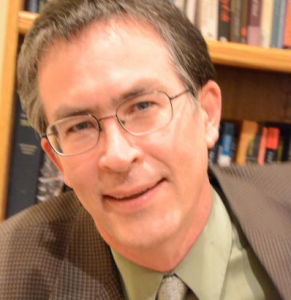 Stephen H. Webb (1961-2016) (note on his recent passing). Stephen H. Webb is an American Catholic theologian, author, and First Things columnist who teaches at Christian Theological Seminary in Indianapolis, Indiana. He holds a Ph.D in theology from the University of Chicago and a B.A. in religion from Wabash College, where he taught in the religion department from 1988 to 2012.
Stephen H. Webb (1961-2016) (note on his recent passing). Stephen H. Webb is an American Catholic theologian, author, and First Things columnist who teaches at Christian Theological Seminary in Indianapolis, Indiana. He holds a Ph.D in theology from the University of Chicago and a B.A. in religion from Wabash College, where he taught in the religion department from 1988 to 2012.
Author of more than a dozen books and hundreds of articles, Professor Webb’s research works cover everything from a Biblical basis for Christian vegetarianism to a theology of compassion for animals and a theology of sound for hearing-impaired Christians. He has also written on the Christian conversion of Bob Dylan and on the problem of creation and evolution. He converted to Catholicism in 2007 and currently lives with his wife (a theater professor at Butler University) and children in Brownsburg, Indiana
Professor Webb has written three books relating to LDS theology. These include Jesus Christ, Eternal God: Heavenly Flesh and the Metaphysics of Matter (Oxford 2012), Mormon Christianity: What Non-Mormon Christians Can Learn from the Latter-day Saints (Oxford, 2013), and (with Alonzo L. Gaskill), Catholic and Mormon: A Theological Conversation (Oxford, 2015).
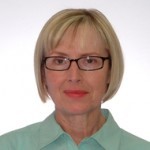 Camille Stilson Williams (J.D., M.A., Brigham Young University) is former Administrative Director of the Marriage and Family Law Research Project at the J. Reuben Clark Law School at Brigham Young University. She has taught family law for undergraduates, and other courses at BYU.
Camille Stilson Williams (J.D., M.A., Brigham Young University) is former Administrative Director of the Marriage and Family Law Research Project at the J. Reuben Clark Law School at Brigham Young University. She has taught family law for undergraduates, and other courses at BYU.
Her publications include “Planned Parent-Deprivation: Not in the Best Interests of the Child,” Whittier Journal of Child and Family Advocacy 375-406 (2005); “State Marriage Amendments, Essentialist Arguments, and the Non-Essential Woman,” Florida Coastal Law Review 453-472 (2005-2006); “Women, Equality, and the Federal Marriage Amendment,” 20 BYU Journal of Public Law, 487-525 (2006); “Women in the Book of Mormon: Inclusion, Exclusion, and Juxtaposition,” Journal of Book of Mormon Studies 11:66-79 (2002); “A Response to Professor Ruether,” in Mormonism in Dialogue with Contemporary Christian Theologies, David L. Paulsen and Donald W. Musser, eds., (Macon GA: Mercer University Press, 2007); “To What Purpose is this Waste?” Rehabilitating Female Roles in the Family, in Virtue and the Abundant Life. Lloyd D. Newell, Terrance D. Olson, Emily M. Reynolds, and Richard N. Williams, eds., (Salt Lake City, Utah : Deseret Book, 2012).
She currently works as an assistant city attorney. She and her husband, Richard, live in Provo, Utah, and are the parents of two daughters and three sons.


